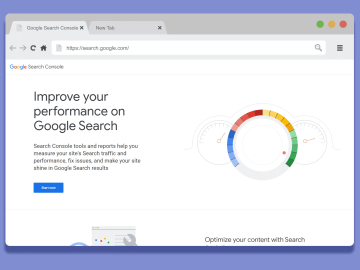Table of Contents
Show more
Show less
Creating a compelling website is a must for any career photographer. It’s a place not only to display your work and your artistic vision, but also connect you with your audience. We find out how to make a photography website that not only showcases your talent but helps you grow your photography business.
Why photographers should make a photography website
A photography website is much more than a digital portfolio; it’s a multifunctional tool that establishes your online presence and professional identity. At its core, a website serves as your virtual business card, providing a first impression to potential clients and setting you apart in the competitive world of photography. It’s where your unique style and skill set are showcased, allowing visitors to explore and appreciate your work in a curated space.
Beyond being a gallery of your best shots, your website acts as a marketing hub. It’s a platform for direct communication with clients and a means to gain visibility through search engine optimisation (SEO). It can also function as a space to sell your services to clients, schedule appointments, share your pricing information and collect payment.
How to make a photography website in six steps
Here are the fundamental steps required to make a photography website:
- Define your goals.
- Choose the right platform.
- Design the website.
- Showcase your portfolio.
- Incorporate SEO and online marketing.
- Keep your website maintained and updated.
Let’s look at each step in greater depth.
Step 1. Define your goals
What do you want to achieve with your photography website? Are you focusing on showcasing your portfolio, selling your work, or both? Maybe you want it to be an online calling card? Your answer will guide your next steps. Remember, your goals may evolve over time as you and your business grow but that’s perfectly fine. All you need right now is to focus on your current goals.
Step 2. Choose the right platform
Selecting the right platform is a critical first step in building your photography website. It’s the foundation that supports your site’s design, functionality and ease of use.
When choosing a platform, consider your technical skills, the level of customisation you want, and the primary purpose of your website.
Lots of platforms will help you create a photography website that suits your needs. Read about the best photography website builders here. Remember, the right platform not only showcases your work effectively but also aligns with your future goals and the growth of your photography business. We suggest Squarespace for those who want to focus on displaying a portfolio and Format for those who want to sell their photography services.
Step 3: Design your website
The design of your photography website plays a pivotal role in how your work is perceived. A well-designed website can enhance your photos, create a professional image and improve user experience (UX). Your website design is not only about aesthetics. It’s about creating an experience that resonates with your audience and invites them to explore your world of photography. Here are some tips to consider:
- appropriate theme/template: Select a theme that complements your photography style. Minimalist designs often work well as they allow your photos to stand out. Also, ensure the theme is responsive
- layout and navigation: Keep the layout clean and uncluttered. Let your work be the focal point. Make navigation intuitive and straightforward by including clear menus and categorising your work for easy browsing
- design consistency: Use a website-wide consistent colour scheme and font style that also aligns with your brand and photography style. This creates a cohesive and professional look
- speed and performance: Optimise image sizes to ensure your website loads quickly because slow loading times can make visitors click away. Regularly test your website’s performance and make necessary adjustments
- include essential pages: Besides your portfolio, include an “About me” page to share your story and establish a connection with visitors. A contact page with a form or your details is also crucial for potential clients to reach you.
Step 4. Showcase your portfolio
Your portfolio is the heart of your photography website, where your talent and style are on full display. By thoughtfully curating and presenting your portfolio, you can create a compelling exhibit of your work that speaks to your audience and potential clients. Here are a few tips to make it stand out:
- choose a variety of images that showcase your skills and versatility
- include only your best work. It’s better to have fewer high-quality images than many mediocre ones
- regularly update your portfolio to keep it fresh and reflect your latest skills
- ensure your images are high resolution but optimised for web use to maintain fast load times
- consider watermarks to protect your work but keep them subtle so they don’t distract from the image
- accompany your images with brief descriptions or stories. This adds depth and engages the viewer on a personal level.
Step 5: Incorporate SEO and online marketing
SEO and online marketing are essential for making your photography website visible to a broader audience. By optimising your site with relevant keywords and ensuring it’s structured in an SEO-friendly manner, you enhance its ranking on search engines. Many website builders have built-in SEO tools to help you properly optimise. This makes it easier for potential clients to discover your work. Blogging about your photography journey or sharing photography tips not only engages visitors but also boosts your site’s SEO, keeping your content fresh and relevant.
For example, if you’re a wedding photographer, creating a blog post that shows your work at a particular venue will help you come up in search when someone is looking for more info about wedding photography at that venue.
Integrating social media with your website forms a cohesive online presence. Sharing updates and work on platforms, such as Instagram or Facebook drives traffic back to your site and helps build a community around your brand.
Step 6. Keep your website maintained and updated
A photography website is not a “set-it-and-forget-it” project. Regular maintenance and updates are key to keeping it relevant, engaging and functioning smoothly. Refreshing your portfolio with new work consistently keeps it current and showcases your evolving skills. If you also run a blog, update it with fresh content regularly, maintaining a dynamic and lively website. This not only captivates your audience but also aids in SEO, keeping your site visible and relevant.
In addition to content updates, the technical health of your website is crucial. Regular checks for broken links, loading issues and security updates ensure a smooth user experience. Periodic reviews of your website’s performance, using tools such as Google Analytics, help you understand visitor interactions and guide improvements. Keeping your site well-maintained reflects your professionalism and helps in growing your photography business.
Frequently Asked Questions (FAQs)
What website builder do photographers use?
Photographers often prefer website builders, such as Squarespace, Wix and WordPress due to their user-friendly interfaces and visually appealing templates. Squarespace is particularly popular for its elegant designs and simplicity, making it a go-to choice for showcasing photography portfolios.
WordPress offers greater customisation and SEO capabilities, appealing to photographers who want more control over their site’s functionality and reach. Wix is another favourite, known for its ease of use and drag-and-drop functionality.
Why should a photographer have a website?
A photographer should have a website to showcase their portfolio professionally, reach a wider audience and establish their brand.
A website serves as a centralised platform for potential clients to view their work, learn about their services and make contact.





